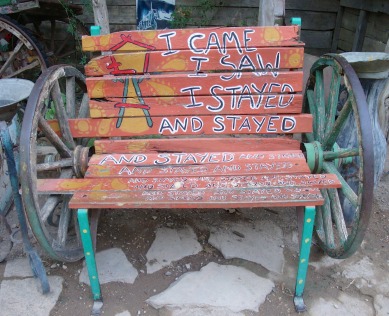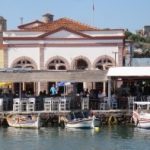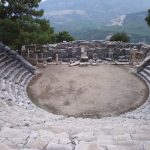Back in the early 1990s Olympos was a little-known but idyllic backpacker hangout with a few genuine treehouses hunkered down amid the woodland of the Beydağlari National Park just inland from a lovely beach and within easy reach of Antalya.
Today it has been been well and truly discovered not just by foreign tourists but by Turkish students who like to spend their long summer breaks here. The end result has inevitably been an increase in noise and congestion, along with the spawning of lots more accommodation, not all of it environmentally sensitive, let alone beautiful. Most people will still have a great time here though since Olympos really does have it all: beach, ruins, mountains, the Chimaera… Even the most cynical will find themselves chilling out and hankering to stay on.
One slight snag is that the presence of the ruins across the path leading to the beach means that you must buy a ticket to access the beach, turning it in effect into a private facility. If you’re staying for several days you will need to buy a pass to reduce the cost. In 2024 a pass offering five entries costs TL180, one offering 10 entries TL280. A single entry to thr ruins will cost a foreign visitor 10 euros.
Note that there is no cash machine in Olympos.
Around the Olympos site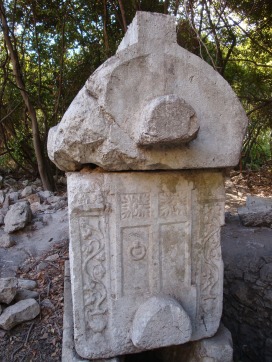
The ruins of ancient Olympos may not be the most extensive in Turkey but they sit immediately behind a lovely curve of beach all but lost in a dense Mediterranean undergrowth of olives, vines, oleanders and laurel.
Olympos appears to have started life as a Lycian settlement but was eventually absorbed into the Roman Empire in 43 AD so that most of what remains at the site date from Roman and Byzantine times. The most conspicuous remains are part of the Byzantine city wall which was rebuilt by Genoese traders in the 12th century. A pair of Lycian tombs are also visible near the beachside entrance to the site. Otherwise, the ruins are not always easy to decipher, although you can pick out the remains of an ancient theatre, Byzantine church and aqueduct.
Exploring the ruins offers a rare chance to imagine yourself an explorer – then afterwards you can climb up the mountainside to examine the Chimaera, a curious, unextinguishable flame that ancient mariners record having seen when they were far out at sea. Note that the Chimaera is actually closer to the small resort of Çıralı at the other end of the beach from the Olympos ruins.
The Lycian Way/Lykia Yolu long-distance walking trail passes through Olympos.
Sleeping
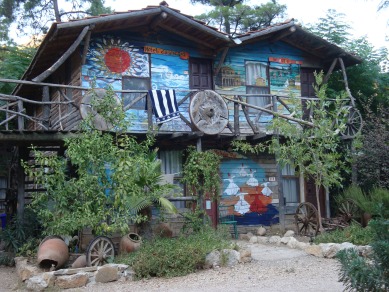 Kadir’s PlaceThese days there are few true treehouses at Olympos. Instead most of the accommodation is in bungalows and cabins of varying degrees of attractiveness.
Kadir’s PlaceThese days there are few true treehouses at Olympos. Instead most of the accommodation is in bungalows and cabins of varying degrees of attractiveness.
Kadir’s Yörük Top Tree Houses (Tel: 0242-892 1250) was here first and it remains the most characterful place to stay, albeit the one that is furthest from the beach.
Bayram’s Tree Houses (Tel: 0242-892 1243) is nearer to the sea and has a nice cool vibe.
Turkmen Tree Houses (Tel: 0242-892 1249), a favourite with Turks, has turned into a large and rather obtrusive complex.
Transport info
To get to Olympos without your own wheels you need to take a bus along the Fethiye-Antalya coast road, then get off at the road junction and wait for a dolmuş to come and run you the last 9km down to the accommodation.
You can ask to be dropped at whichever place you fancy. If you’re not sure, get dropped off at the beach end and walk back inland.
There’s a simple cafe and toilets at the road junction so you don’t have to worry about getting stuck.
Day trip destinations